A Traditional Family Adventure With Mamma and Co.
By: Sara Grazia

We're hearing about it everywhere at the moment, restaurants are offering it, top chefs are embracing it and everyone loves it – Nose to Tail, Paddock to Plate – name it what you like but this process is nothing new. From since I can remember my family has always processed food this way.
It’s Day 2 of my traditional salami making and meat curing weekend. It wasn't quite the early start as it was the day before. This morning the sun is out and there’s a cool breeze – all in all the perfect weather for de-boning my pig and processing a pig.
It's never an easy job de-boning an entire pig on your own, especially one that weighs 4 times what you do… It was going to be a long and exhausting day, but something I look forward too every year! By the time I got to my mammas, there was coffee brewing on the stove and homemade lemon biscuits fresh out the oven.
Before the others arrived we had our coffee, nibbled on hot biscuits then got to work laying the table, sharpening the knives, preparing the spices and washing a number of buckets ready for the various cuts of meat to be put into. The meats would be allocated to each bucket by purpose and would be used for making the salami, fresh sausages, cured meats and lardo.

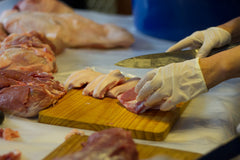
As the morning went on people slowly started to filter in and lending a hand. We started by laying out all the individual sections of the carcass on a long table. Mamma and co. were at one end, cleaning and dicing up the meat, getting it ready for mincing later on.
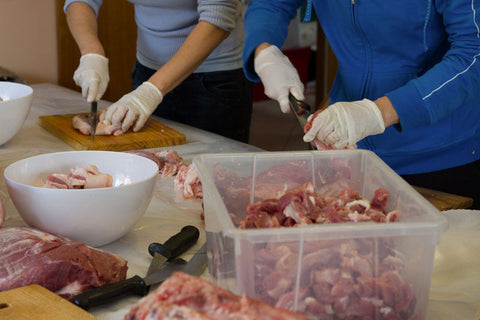
Down the other end of the table I was busy dividing fillets and carefully removing the ribs and spine to expose the cuts that would be used for the pancetta and lonza. All the quality cuts of meat went into one bucket ready for salting, while all the bones went into another ready for boiling… and dinner!.


Processing an entire pig isn't for everyone, its labour intensive and time consuming; however I find the process really exciting. Having studying anatomy back at university, seeing all the different sections of the animal and which cut of meat comes from where is wonderfully intoxicating to me. Being able to separate all the individual cuts properly is an art in itself, and the quality and precision of how the job is done is reflected in the finished product.
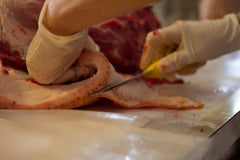
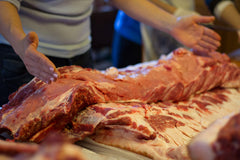
Preparing the prosciutto is always one of the most challenging parts of the process. Many artisans would argue that prosciutto making is a masterful craft in itself. To produce a quality piece of prosciutto can take several years of practiced skill. This cut is the king (or in this case, the Queen) of all cured meats.
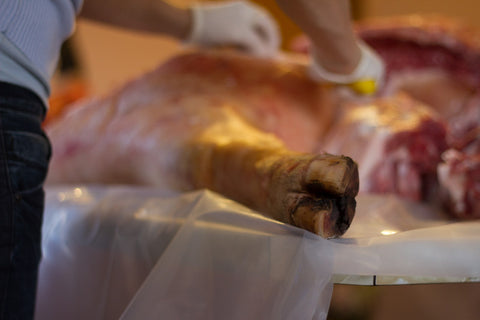
As I’m going to be preparing one leg for myself and the other for the family, mamma and I decide to keep one leg on the bone and the other will be dissected into individual sections and turned into prosciuttini. Having a 200kg animal tends to gives you more liberties on what and how much of everything you can process.
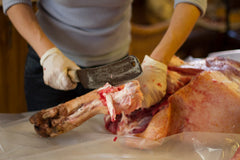
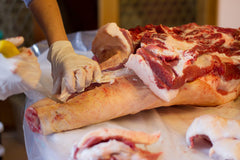
After the prosciutto was seen to, it was time to process the other half of the carcass starting with the pancetta. Once the ribs are removed, we cut them down into manageable sizes and they were taken off to the kitchen and slow roasted while we all continued working. After a short time the aroma of the seasoned oil Glaze my mamma had prepared for the ribs was heating up and it filled the air inside and out. At this point I started thinking "Tools down… DINNER!”.
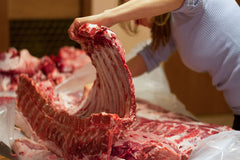

In my previous post, I said that my parents would use the entire animal, and above I mentioned how popular the whole “Nose to Tail” processing is becoming. I wonder if they do actually use everything in all those fancy eateries that boast of such things!
Here my mamma is meticulously removing a very thin fat layer from the belly. She then tenderly tears and pulls it apart into paper thin layers. This is what we're going to wrap our capocollo in later. Many of you that cure meats of your own probably use the dried version of this for wrapping your capocollo, pancetta, bresola and other meats in ready for curing. To see the difference in appearance, if you’re unfamiliar click here.
This is a real example of how everything within the animal is valued and used in the traditional sense. When I say everything is used, I mean it literally!
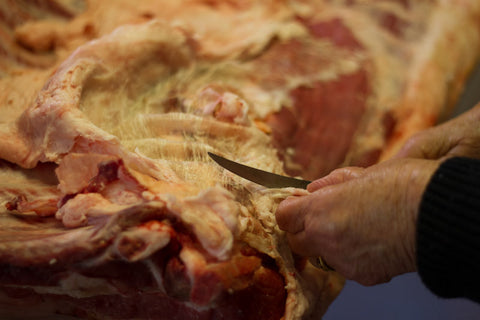
After all the bones have been taken away to boil for hours in a massive 140 liter pot, the meats that would be used for curing are salted and set aside to rest. Now seems like a perfect time to sample those slow cooked ribs.
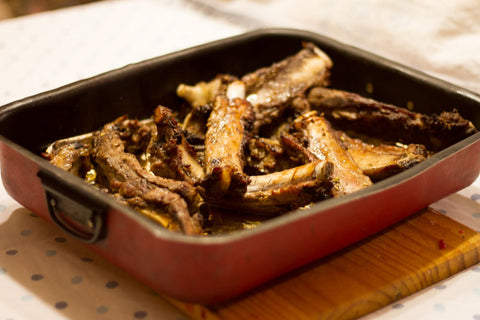
Along with crispy bread and an omelet that could feed an army, we all tucked into dinner. It was simple, delicious and comforting. For the first time all day everyone was silent! We all slumped down at the table and enjoyed.
After dinner, I lost quite a bit of my help, only a brave few of us were left to see the final phase of the day through to completion. It was time to tackle the salami.
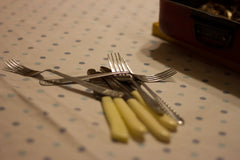

There was one bucket filled with lean meat, another with slithers of pork fat and another filled with beautifully marbled cubes of meat. These would all be used to make different types of salami. It’s not just the seasoning mix used that differentiates one salami from another. With the scales to the left and the meat mincer to the right, slithers of fat and lean meat were weighted up and put through the mincer.
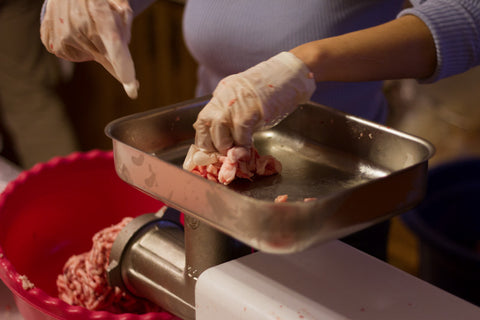
After mincing, the spices were added and mixed through. While one of us was furiously mixing, blending everything together, the other was putting the next lot of meat through the meat mincer. Spices were added and mixed through thoroughly. This process continued four or five more times until all the salami meat had been minced, mixed and put to one side to rest overnight before filling.
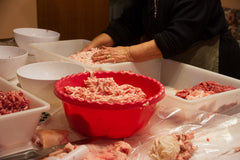

It was now a little after 11:00pm and it's time to go home and sleep. There is still a lot of work to be done over the coming days.
If you missed reading about Day 1 click here and discover where the journey originally started.
If you want to try some new salami recipes of your own, see my Secrets in Salami book and make a variety of different types of salami that have been enjoyed for generations.



























← Older Post Newer Post →
0 comments